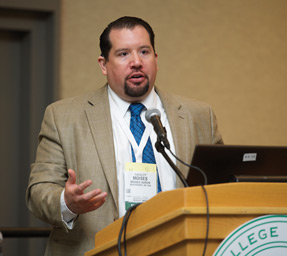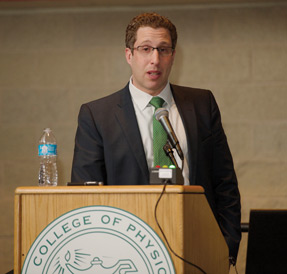Consider country, culture when caring for Latino patients
Cultural competency can conquer concerns about cultural barriers, said a panel of experts who discussed how to approach and manage patients in the Latino community.
Cultural competence can be defined as patients and doctors coming together to talk about their concerns without cultural barriers, Olveen Carrasquillo, MD, MPH, told attendees at an Internal Medicine 2014 panel on “Special Issues in Providing Care to Hispanic and Latino Patients.”
Doctors did their own version of that during the session, airing concerns related to caring for Latino patients. (The terms Hispanic and Latino are mostly interchangeable, Dr. Carrasquillo noted, although Hispanic is more prevalent in Texas and Latino in California, and the latter term is preferred by some because it has less of a colonial connotation.)

Dr. Carrasquillo, a professor of medicine at the University of Miami, started the session by offering some background on Latino demographics. Latinos are a rapidly growing ethnic group (not a race, since the definition is based on country of origin rather than skin color, he noted) in the U.S., expected to comprise 1 in 3 Americans by 2060.
The bad news in Latino health is that many Latinos lack insurance coverage, and the decision of many Latino-heavy states to refuse Medicaid expansion means that relatively few will gain coverage under the Affordable Care Act. “If we include the undocumented, it's about 40% to 50% of Latinos that are not going to benefit from health insurance expansion,” said Dr. Carrasquillo.
The good news is that U.S. Latinos continue to live longer than their peers despite limited access to care and higher rates of some conditions, including obesity and diabetes, a phenomenon known as “the healthy Latino,” Dr. Carrasquillo said.
“Hispanics have much lower death rates than blacks and even non-Hispanic whites,” he said. Researchers have thoroughly examined this decades-long disparity in life expectancy and have still not found an answer, he reported.
More answers have been found, however, about the best ways to make a medical practice welcoming to Latino patients. Brendaly Rodriguez, a health communication specialist at the University of Miami, offered some general suggestions.
“It's not a checklist, because it could lead to oversimplification and thinking that all Hispanics/Latinos believe [this or] that” by group, she said. Physicians should try to learn specifically about the patients they're treating by collecting information about race, ethnicity, primary language spoken, and even some of the history of the patient's country of origin.
“To know about Dominicans, you need to know about the Trujillo years” and how that society was impacted, Ms. Rodriguez gave as an example, referring to the dictator Rafael Trujillo, who controlled the Dominican Republic from 1930 to 1961.
She encouraged clinicians to ask open-ended questions, investigate patients' barriers to care, and use community health workers, also known as “promotores de salud.” She also strongly urged practices to use professional translators, rather than relying on friends and family (whose stake in the conversation could lead them to distort the translation) or one's own less-than-fluent language skills.
One audience member asked about learning more medical Spanish to communicate with his patients, and the panelists lauded his intentions but cautioned him not to tackle any complex conversation. “Patients greatly appreciate you making any effort to speak their language, but you really shouldn't wing it,” Dr. Carrasquillo said.
Another audience member asked for any advice on improving patient satisfaction scores among Hispanic patients, who tend to rate satisfactory care at a lower number. Dr. Carrasquillo said he hasn't found a good solution yet, having seen 1 hospital instruct patients to give 5s and others lobby the measurement companies to adjust Hispanic patients' scores. “Often their anchoring point is around 3 or 4,” he said.
Palliative care may be another area where clinicians notice differences in how Latino patients respond. “There's more honesty about end of life. We try less futile care,” said panelist Moises Auron, MD, FACP, a hospitalist at the Cleveland Clinic. “The main thing is being very open with the patient and the family and explaining what palliative care means. When they understand it is not throwing in the towel, it is changing the context of medical care, it is very welcome.”
The importance and influence of family should be a major consideration in planning end-of-life discussions, the experts agreed. Family involvement affects a number of aspects of medical care, they said, from weight loss plans (if you want a patient to exercise, make classes open to the whole family and don't give a healthy Mexican cookbook to Salvadorans) to prescriptions (an elderly patient's adherence may depend on her daughter's ability to afford medications).
But, finally, there are some differences that a physician just has to accept. One audience member asked whether she should call the FDA about her concern: “The patients are going to these Hispanic supermarkets, and the stores are selling antibiotics and other medications that are not controlled.”
Dr. Carrasquillo advised that if you want to effectively engage the community it may be better not to call the authorities. “It would create high levels of community distress and you would never be able to walk into a bodega again,” he said. Instead, talk to those selling the medications about your concerns and try to work together toward your mutual goal of good health for Latino patients.




